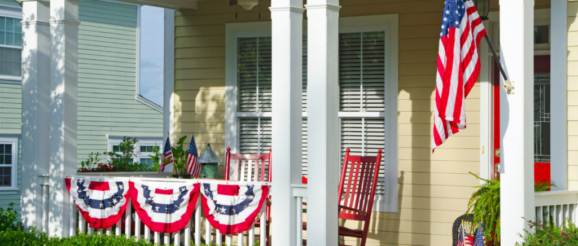It’s time to put American innovation to work for housing

In these times, double down — on your skills, on your knowledge, on you. Join us Aug. 8-10 at Inman Connect Las Vegas to lean into the shift and learn from the best. Get your ticket now for the best price.
Unpredictable interest rates present challenges to first-time homeownership. People are locked into their houses and don’t feel that they can afford to sell, even if they want to.
Meanwhile, rental rates continue to rise, not based on economic reality but based on the perception that renting is the only option for a huge percentage of the population.
Homeownership has been a cornerstone of the American Dream throughout our history. It’s literally what brought the early settlers here — the idea that there was room for everyone and the freedom to create community.
The role we play as real estate professionals
As real estate professionals, we’ve made money out of that idea. We’ve used it to sell homes and sell our services. We’ve printed it on our marketing materials and put it on our websites. Many of us will say something similar on our social media posts during the July 4th holiday.
Yet, in the face of very real challenges to the whole concept of homeownership as an inalienable American right, we shrug and say that there’s nothing we can do. It’s out of our hands.
Instead of looking for solutions, many of our colleagues advocate getting choosier about who we work with. Make sure they’re pre-approved. No, make sure they’re pre-underwritten. Work more with cash buyers so you don’t have to worry about underwriting or a mortgage at all.
I am very concerned about the fact that Gen-Z and millennials, two of the biggest generational cohorts in our country’s history, believe, in large measure, that they’ll never own a home. That should constitute an emergency on the part of our industry. Instead, it just seems to generate a yawn.
A stagnant real estate market during a time when so few people are even on the path to homeownership should not exist. We need to figure out a way to keep the American dream alive.
Innovative development projects can help
Turning a struggling West L.A. mall into a Google campus takes vision and innovation. Turning an abandoned high school into an apartment complex takes vision and innovation.
Overcoming governmental obstacles to converting zombie commercial space into residential space will take vision and innovation.
What about this commercial property, a portfolio of property connected to the defunct Beverly Hospital? It’s 17.48 acres and approximately 380,000 square feet across 16 parcels already zoned for multifamily, SFR and retail, among other uses. Or this Fresno hospital with 412,280 square feet.
As cool as the Home Depot tiny house ADU and the Amazon ADU may be, they’re not enough. They’re not long-term solutions, nor are they solutions that work for everybody.
The Sears Kit Home was a solution for housing. It was built to last and there are thousands still in existence today.
Ultimately, it’s up to us to change the narrative — and the reality
The innovation required goes beyond developers and investors, however. As I’ve written before, I think the mortgage industry really needs to get back into figuring out some solutions for homeowners who want to sell but can’t let go of their low interest rate. After all, that’s what’s creating this deadlock in inventory.
Why not create options to let people transfer their interest rate and loan amount to another property? Alternatively, offer no-fee re-fis so these homeowners would feel confident of getting a better deal once rates stabilize.
Educating yourself and the agents on your team or in your brokerage about down payment assistance and closing cost assistance is one way to help match buyers with homes. Getting out of your favored “easy” communities and finding inventory in new and transitioning markets is another.
Connecting with contractors and handymen in your area to crunch the numbers on renovations, then working with your most reliable local lenders to identify relevant loan options, makes you a resource rather than an order-taker.
Connecting with builders in your area and staying informed about new zoning and new development in your market can help. Caring about affordable housing and familiarizing yourself with programs that are relevant to your area can help.
Creating content that’s aimed at buyers — giving them hope, demystifying and educating them about the process — this puts the right energy out into the world. It helps to overcome the negativity and fear-mongering that’s endemic in the media landscape.
You know what you’re best equipped to do. If you’re a great number cruncher and stat analyst, partner with a great communicator to get those numbers out there. If you’re interested in fair housing advocacy in your area, run for office or volunteer.
If you’re an expert in investment and development, start looking around for projects — and partners who’ll get on board with a new initiative. If you know everyone in city or county government, figure out what zoning regulations are standing in the way of adaptive reuse projects in your market.
Most of all, stop waiting for business to come to you. Make it happen. Have conversations. Hold buyer and seller seminars. Reach out to Expireds and out-of-town investors to find hidden inventory, then help hopeful buyers (who may not be 100 percent ready) to get ready and get into a home.
We can do this. This is what we were built for. Let’s roll up our sleeves and make it happen.
Troy Palmquist is the founder and broker of DOORA Properties in Southern California. Follow him on Instagram or connect with him on LinkedIn.
